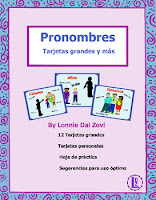
SHOULD YOU TEACH LANGUAGES WITH A TEXTBOOK OR CREATE
YOUR OWN PROGRAM?
There are a lot of conversations about the pros and cons of
using textbooks in the foreign language classroom. Some schools carefully chose
which textbook their school/district/state will adopt, having preview
committees, review functions and lively discussions then votes. Others wish
they had all that, but find out that
there is no money for textbooks. Still others don’t even have textbook
conversations. They instead make (or allow) the teachers to piece together
their own materials.
For those of you new to the debate (winging it versus using a
textbook) and possible recently educated, you may know only one way. It might
be time to consider the following:
Why some teachers don’t want to use a textbook:
·
They don’t like using books in the class as they
find them restricting
·
They don’t like using the vocabulary/grammar
presented
·
They don’t like their
pictures/activities/cultural snippets
·
They have a different methodology which they
design in accordance to their class make-up or needs( TPRS) or others.
·
They may be teaching language incidentally,
through immersion with academic content. activities, games, or just living (as
a first language is learned) and
language teaching textbooks just have no room in their curriculum.
Why many
teachers use textbooks in their classes:
 |
"We love the textbook and always use it." |
·
Their schools or districts demand that all
teachers use the same curriculum/books.
·
They trust the collective knowledge and abilities of the
large group of authors of the textbook.
· They enjoy the many colorful (copyrights
cleared) photos and other art in the books.
· They want uniformity and accountability from all
their teachers to make vertical alignment more seamless.
· They benefit by the large array of basic and
ancillary materials available and related (controlled, on - level vocab and
grammar). The worksheets, digital games and activities, self-correcting assessments,
links to authentic materials and much much more.
·
They like the freedom to design their curriculum
according to the abilities and interests of their particular student while
still staying within the school’s need for “uniformity of content”.
·
It frees up the teachers from having to create
worksheets, games or other materials that they may not be qualified to create.
 |
"I'll follow the textbook, use it as a guide but not ONLY the textbook" |
Most teachers have been trained to intelligently choose
materials, methods and how to deliver them. Also, although fluent and
proficient, teachers have different levels and abilities. Some may only know
one type or region of the language and not be able to expose their students to
other ways of saying things. Sometimes native speakers know what sounds right,
but may not instinctually know how to explain the whys and hows to non-natives.
Others are great at using others’ materials but have no idea of what and how to
create their own. This is not a complaint, just a fact. The majority of
teachers can benefit from some sort of “road map”, which is what a textbook
provides.
What if you
are a creative, experienced and independent type of teacher who loves to write
and create materials?
Go for it. It’s a lot
of work. It may take a number of years until you have all of your materials
ready. If you are lucky, maybe you only teach one level and therefore have only
about 180 hours worth of materials and activities. If not, like many of us, you teach 3-4
different classes, you would require quadruple the amount of work. That
probably would make you 1 - crazy and 2 - asleep for your own class. Because no
man is an island, you should enlist a cadre of proof-readers when possible of
competent, intelligent and well - traveled teachers. Educated native or near
native speakers (and quite literate, of course) are also good proof-readers to
have on board.
SO WHATS THE FINAL ANSWERS? SHOULD YOU TEACH
LANGUAGES WITH A TEXTBOOK OR CREATE YOUR OWN PROGRAM?
A new teacher asked me, “So
what’s the problem with textbooks?
I hear some language teachers smugly bragging that they didn’t use the
textbook, like a badge of honor. Are textbooks bad? Am I less of a teacher because I use one?“ I laughed since that has become a frequent
discussion in language teacher chat rooms, and in my then upcoming (this) blog.
My answer to him:
Yes, sometimes there is some degree of smugness or air of
superiority when some teachers brag that they don’t use the textbook. Some teachers
don’t use textbooks because their schools or states can’t afford them. More
often than not, other teachers have
unique ways of teaching so they don’t, can’t or won’t use a textbook. However,
many, if not the majority of language teachers, use the textbook in some
capacity or another. It saves time, paper, and headaches. Some use the textbook
and many of its extras almost exclusively. Some pick and choose what they want
to use and then supplement what they want or need to. For them, the textbook
and the extras, is just one of their many tools in their teacher’s tool bag.
Some items you might want to consider for your language teacher's toolbox or tool bag:
 |
Example of some cultural readings and activities |
- Plenty of appropriate music and accompanying activities
- Short or long videos with or without accompanying activities/worksheets
- Cultural activities, coloring pictures, maps, dances, foods, customs explained...
- Legends
- Games to further language learning
- Flashcards and other visuals
- Maps
- Slide shows that teach or review
- Interactive white board activities
- Textbooks for use or as reference for teacher and/or students
 |
Example of some legends |
 |
Example of excellent visuals |
 |
Example of cultural coloring |













